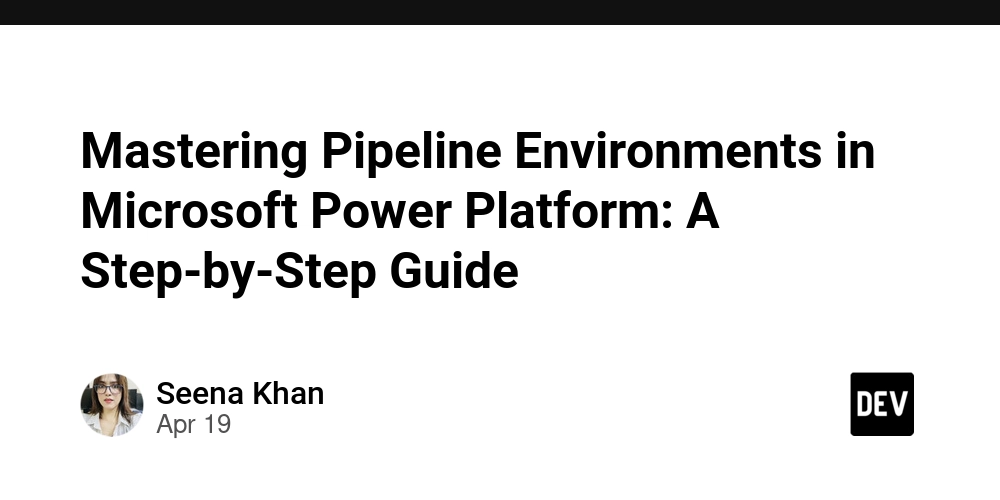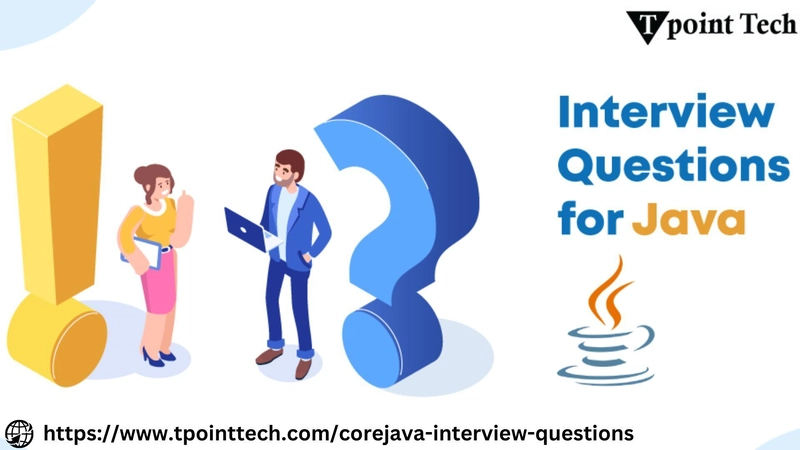AI Team Cracks LLM Reasoning: New Model + "CEO" Agent Beats Benchmarks
This is a Plain English Papers summary of a research paper called AI Team Cracks LLM Reasoning: New Model + "CEO" Agent Beats Benchmarks. If you like these kinds of analysis, you should join AImodels.fyi or follow us on Twitter. Scaling Collaborative Reasoning: The Challenge and Promise of Multi-Agent Systems Complex tasks frequently challenge single LLMs, despite their impressive capabilities. Multi-agent systems (MAS) built on large language models offer a promising solution by leveraging collaborative interactions among multiple agents. These systems excel at mathematical reasoning, software development, and scientific discovery—bringing us closer to artificial general intelligence capable of generalizing across domains. While recent advancements in test-time scaling (TTS) have significantly improved single-agent performance on challenging reasoning tasks, effectively scaling collaboration and reasoning in MAS remains an open question. This research introduces an adaptive multi-agent framework that enhances collaborative reasoning through both model-level training and system-level coordination. The key contributions include creating the M500 dataset containing 500 high-quality multi-agent collaborative reasoning traces, fine-tuning Qwen2.5-32B-Instruct to produce M1-32B (a model optimized for multi-agent collaboration), and introducing a novel CEO agent that dynamically manages discussions between agents. The system demonstrates significant performance improvements across diverse tasks, with M1-32B achieving 12% improvement on GPQA-Diamond, 41% on AIME2024, and 10% on MBPP-Sanitized—matching state-of-the-art models like DeepSeek-R1 on some tasks. The State of Multi-Agent Systems and Test-Time Scaling Recent advancements in large language models have sparked interest in multi-agent systems that leverage collaborative interactions to solve complex problems. These systems aim to develop collective intelligence that surpasses the capabilities of individual agents. Meanwhile, test-time scaling techniques such as Monte Carlo Tree Search, large-scale reinforcement learning, and supervised fine-tuning on detailed reasoning chains have significantly improved single-agent performance on challenging tasks. However, a gap exists in understanding how to effectively scale collaborative reasoning within multi-agent systems. This research addresses this gap by investigating how to enhance LLM-based multi-agent systems through both model fine-tuning and system-level coordination. The approach builds on previous work in collaborative approaches and test-time scaling, offering a comprehensive framework for improving multi-agent reasoning capabilities. Building a Better Multi-Agent Framework: Data, Training, and Coordination The Adaptive Multi-Agent Framework: A High-Level Overview The proposed framework combines model-level training with system-level coordination to enhance collaborative reasoning in multi-agent systems. The approach involves three key components: creating a high-quality dataset of multi-agent collaborative reasoning traces, fine-tuning a large language model on this dataset, and implementing a CEO agent that dynamically manages agent collaboration. This two-level enhancement strategy ensures that both the underlying model and the system architecture contribute to improved reasoning capabilities. The framework adapts to different types of problems, allowing for flexible reasoning depth and collaboration patterns based on task complexity. Creating High-Quality Collaborative Reasoning Data The researchers constructed M500, a high-quality dataset containing 500 multi-agent collaborative reasoning traces. They selected diverse and challenging problems from various domains, including general understanding, mathematical reasoning, and coding. To ensure dataset quality, they implemented rigorous filtering criteria to remove low-quality examples. The team utilized DeepSeek-R1 to generate robust reasoning traces, leveraging its strong performance on complex reasoning tasks. The resulting dataset provides rich examples of effective multi-agent collaboration, serving as valuable training material for improving collaborative reasoning capabilities in large language models. Fine-Tuning for Collaborative Intelligence Using the M500 dataset, the researchers performed supervised fine-tuning on Qwen2.5-32B-Instruct to create M1-32B, a model optimized for multi-agent collaboration. The fine-tuning process focused on enhancing the model's ability to engage in productive collaborative reasoning, including clear communication, building on others' ideas, and presenting coherent arguments. This training approach differs from traditional fine-tuning for single-agent reasoning by emphasizing collaborative dynamics and inter-agent communication. The resulting model demonstrates improved performance when deployed in multi-agent systems, highlighting the val

This is a Plain English Papers summary of a research paper called AI Team Cracks LLM Reasoning: New Model + "CEO" Agent Beats Benchmarks. If you like these kinds of analysis, you should join AImodels.fyi or follow us on Twitter.
Scaling Collaborative Reasoning: The Challenge and Promise of Multi-Agent Systems
Complex tasks frequently challenge single LLMs, despite their impressive capabilities. Multi-agent systems (MAS) built on large language models offer a promising solution by leveraging collaborative interactions among multiple agents. These systems excel at mathematical reasoning, software development, and scientific discovery—bringing us closer to artificial general intelligence capable of generalizing across domains.
While recent advancements in test-time scaling (TTS) have significantly improved single-agent performance on challenging reasoning tasks, effectively scaling collaboration and reasoning in MAS remains an open question. This research introduces an adaptive multi-agent framework that enhances collaborative reasoning through both model-level training and system-level coordination.
The key contributions include creating the M500 dataset containing 500 high-quality multi-agent collaborative reasoning traces, fine-tuning Qwen2.5-32B-Instruct to produce M1-32B (a model optimized for multi-agent collaboration), and introducing a novel CEO agent that dynamically manages discussions between agents. The system demonstrates significant performance improvements across diverse tasks, with M1-32B achieving 12% improvement on GPQA-Diamond, 41% on AIME2024, and 10% on MBPP-Sanitized—matching state-of-the-art models like DeepSeek-R1 on some tasks.
The State of Multi-Agent Systems and Test-Time Scaling
Recent advancements in large language models have sparked interest in multi-agent systems that leverage collaborative interactions to solve complex problems. These systems aim to develop collective intelligence that surpasses the capabilities of individual agents. Meanwhile, test-time scaling techniques such as Monte Carlo Tree Search, large-scale reinforcement learning, and supervised fine-tuning on detailed reasoning chains have significantly improved single-agent performance on challenging tasks.
However, a gap exists in understanding how to effectively scale collaborative reasoning within multi-agent systems. This research addresses this gap by investigating how to enhance LLM-based multi-agent systems through both model fine-tuning and system-level coordination. The approach builds on previous work in collaborative approaches and test-time scaling, offering a comprehensive framework for improving multi-agent reasoning capabilities.
Building a Better Multi-Agent Framework: Data, Training, and Coordination
The Adaptive Multi-Agent Framework: A High-Level Overview
The proposed framework combines model-level training with system-level coordination to enhance collaborative reasoning in multi-agent systems. The approach involves three key components: creating a high-quality dataset of multi-agent collaborative reasoning traces, fine-tuning a large language model on this dataset, and implementing a CEO agent that dynamically manages agent collaboration.
This two-level enhancement strategy ensures that both the underlying model and the system architecture contribute to improved reasoning capabilities. The framework adapts to different types of problems, allowing for flexible reasoning depth and collaboration patterns based on task complexity.
Creating High-Quality Collaborative Reasoning Data
The researchers constructed M500, a high-quality dataset containing 500 multi-agent collaborative reasoning traces. They selected diverse and challenging problems from various domains, including general understanding, mathematical reasoning, and coding. To ensure dataset quality, they implemented rigorous filtering criteria to remove low-quality examples.
The team utilized DeepSeek-R1 to generate robust reasoning traces, leveraging its strong performance on complex reasoning tasks. The resulting dataset provides rich examples of effective multi-agent collaboration, serving as valuable training material for improving collaborative reasoning capabilities in large language models.
Fine-Tuning for Collaborative Intelligence
Using the M500 dataset, the researchers performed supervised fine-tuning on Qwen2.5-32B-Instruct to create M1-32B, a model optimized for multi-agent collaboration. The fine-tuning process focused on enhancing the model's ability to engage in productive collaborative reasoning, including clear communication, building on others' ideas, and presenting coherent arguments.
This training approach differs from traditional fine-tuning for single-agent reasoning by emphasizing collaborative dynamics and inter-agent communication. The resulting model demonstrates improved performance when deployed in multi-agent systems, highlighting the value of specialized training for collaborative reasoning.
The CEO Agent: Managing Adaptive Reasoning
A novel CEO agent forms a critical component of the framework, dynamically managing discussions between agents to optimize collaboration. This agent serves several key functions: it directs the conversation flow, assigns specific tasks to agents based on their expertise, identifies when additional reasoning is needed, and determines when a solution has been reached.
The CEO agent adapts the reasoning process based on problem complexity, allowing for deeper exploration of challenging problems while efficiently handling simpler tasks. This adaptive coordination mechanism builds on research in enhancing software engineering through extended reasoning, applying similar principles to multi-agent collaboration.
Empirical Validation: Testing the Multi-Agent Framework
Experimental Design and Evaluation Approach
The researchers evaluated their system across a diverse range of tasks, including general understanding (GPQA and Commongen), mathematical reasoning (AIME2024 and MATH-500), and coding (HumanEval and MBPP-Sanitized). They compared their approach against several baseline models, including non-reasoning models (Qwen2.5, DeepSeek-V3, GPT-40) and reasoning models (s1.1-32B, DeepSeek-R1, o3-mini).
The evaluation methodology focused on measuring performance improvements from both the fine-tuned model (M1-32B) and the addition of the CEO agent (M1-32B w. CEO). This comprehensive assessment provides insights into the effectiveness of the proposed framework across different problem domains.
Performance Across Diverse Tasks: Breaking Down the Results
The experimental results demonstrate significant performance improvements across various tasks. The table below summarizes the comparative performance of different models:
| Model | General Understanding | Mathematical Reasoning | Coding | |||
|---|---|---|---|---|---|---|
| GPQA | Commongen | AIME2024 | MATH-500 | HumanEval | MBPP-S | |
| Non-Reasoning Models | ||||||
| Qwen2.5 | 50.2 | 96.7 | 21.1 | 84.4 | 89.0 | 80.2 |
| DeepSeek-V3 | 58.6 | 98.6 | 33.3 | 88.6 | 89.6 | 83.9 |
| GPT-40 | 49.2 | 97.8 | 7.8 | 81.3 | 90.9 | 85.4 |
| Reasoning Models | ||||||
| s1.1-32B | 58.3 | 94.1 | 53.3 | 90.6 | 82.3 | 77.4 |
| DeepSeek-R1 | 75.5 | 97.2 | 78.9 | 96.2 | 98.2 | 91.7 |
| o3-mini | 71.3 | 99.1 | 84.4 | 95.3 | 97.0 | 93.6 |
| M1-32B (Ours) | 61.1 | 96.9 | 60.0 | 95.1 | 92.8 | 89.1 |
| M1-32B w. CEO (Ours) | 62.1 | 97.4 | 62.2 | 95.8 | 93.9 | 90.5 |
Comparison of model performance across different tasks including general understanding, mathematical reasoning, and coding.
M1-32B demonstrates substantial improvements over baseline models, particularly in mathematical reasoning tasks like AIME2024, where it achieves a 41% improvement over the original Qwen2.5 model. The addition of the CEO agent further enhances performance across all tasks, highlighting the value of adaptive coordination in multi-agent systems.
Component Analysis: What Makes the System Work?
Ablation studies reveal the individual contributions of different components to the system's overall performance. The fine-tuned M1-32B model provides substantial improvements over the base model, demonstrating the value of training on high-quality collaborative reasoning traces. This improvement stems from the model's enhanced ability to engage in productive discussions, build on others' ideas, and present coherent arguments.
The CEO agent adds another layer of improvement by optimizing the collaboration process. This component proves especially valuable for complex reasoning tasks that benefit from adaptive management of the discussion process. The combination of both components—collaborative training and adaptive coordination—yields the best overall performance, highlighting their complementary nature.
The CEO's Critical Role: Coordinating for Success
The CEO agent plays a crucial role in improving system performance by effectively managing the collaboration between agents. It dynamically adjusts the discussion process based on problem complexity, guiding agents toward productive reasoning paths and preventing unproductive tangents. This adaptive coordination proves particularly valuable for challenging problems that require extensive reasoning.
Analysis of specific examples shows how the CEO agent identifies when additional reasoning is needed, directs agents to reconsider problematic approaches, and determines when a solution has been reached. These capabilities enhance the efficiency and effectiveness of the multi-agent system, allowing it to tackle complex problems more successfully than systems without such coordination.
Understanding Multi-Agent Dynamics: Analysis of Collaborative Behavior
Examination of interaction patterns reveals key insights into successful multi-agent reasoning. Effective collaboration typically involves clear communication, building on others' ideas, constructive criticism, and consensus-building. The fine-tuned M1-32B model demonstrates these behaviors more consistently than baseline models, contributing to its improved performance.
The dynamics of collaboration evolve during problem-solving, with different phases requiring different types of interaction. Initial exploration benefits from diverse perspectives, while later stages require more focused reasoning and convergence toward a solution. The test-time scaling approach effectively adapts to these changing requirements, enhancing the overall reasoning process within multi-agent systems.
Current Limitations and Future Directions
Despite its impressive performance, the current approach has several limitations. The M500 dataset, while high-quality, remains relatively small compared to datasets used for other LLM fine-tuning tasks. Expanding this dataset could further improve model performance. Additionally, the CEO agent's capabilities could be enhanced with more sophisticated coordination strategies, potentially incorporating reinforcement learning to optimize its management approach.
Future research directions include exploring different agent architectures, investigating the optimal number of agents for different types of problems, and developing more advanced coordination mechanisms. Further work on scaling multi-agent systems could lead to even more powerful collaborative reasoning capabilities, addressing increasingly complex real-world challenges.
The Future of Collaborative AI: Implications and Opportunities
This research demonstrates the significant potential of combining model-level training with system-level coordination to enhance multi-agent collaborative reasoning. The results highlight the importance of both learned collaboration skills and adaptive coordination in scaling multi-agent reasoning to tackle complex tasks.
The promising performance across diverse domains—from general understanding to mathematical reasoning and coding—suggests that multi-agent systems offer a viable path toward artificial general intelligence capable of generalizing across various domains. As these systems continue to evolve, they will likely play increasingly important roles in solving complex real-world problems that demand collaborative intelligence.
The future of collaborative AI lies in developing systems that can effectively coordinate diverse perspectives, adapt to changing problem requirements, and leverage the collective intelligence of multiple agents. This research represents a significant step in that direction, providing both practical techniques and theoretical insights for advancing multi-agent collaborative reasoning.




























![[Webinar] AI Is Already Inside Your SaaS Stack — Learn How to Prevent the Next Silent Breach](https://blogger.googleusercontent.com/img/b/R29vZ2xl/AVvXsEiOWn65wd33dg2uO99NrtKbpYLfcepwOLidQDMls0HXKlA91k6HURluRA4WXgJRAZldEe1VReMQZyyYt1PgnoAn5JPpILsWlXIzmrBSs_TBoyPwO7hZrWouBg2-O3mdeoeSGY-l9_bsZB7vbpKjTSvG93zNytjxgTaMPqo9iq9Z5pGa05CJOs9uXpwHFT4/s1600/ai-cyber.jpg?#)














































































































































![[The AI Show Episode 144]: ChatGPT’s New Memory, Shopify CEO’s Leaked “AI First” Memo, Google Cloud Next Releases, o3 and o4-mini Coming Soon & Llama 4’s Rocky Launch](https://www.marketingaiinstitute.com/hubfs/ep%20144%20cover.png)




































































































































































































![Rogue Company Elite tier list of best characters [April 2025]](https://media.pocketgamer.com/artwork/na-33136-1657102075/rogue-company-ios-android-tier-cover.jpg?#)








































































_Andreas_Prott_Alamy.jpg?width=1280&auto=webp&quality=80&disable=upscale#)



























































































![What’s new in Android’s April 2025 Google System Updates [U: 4/18]](https://i0.wp.com/9to5google.com/wp-content/uploads/sites/4/2025/01/google-play-services-3.jpg?resize=1200%2C628&quality=82&strip=all&ssl=1)










![Apple Watch Series 10 Back On Sale for $299! [Lowest Price Ever]](https://www.iclarified.com/images/news/96657/96657/96657-640.jpg)
![EU Postpones Apple App Store Fines Amid Tariff Negotiations [Report]](https://www.iclarified.com/images/news/97068/97068/97068-640.jpg)
![Apple Slips to Fifth in China's Smartphone Market with 9% Decline [Report]](https://www.iclarified.com/images/news/97065/97065/97065-640.jpg)



































































































































